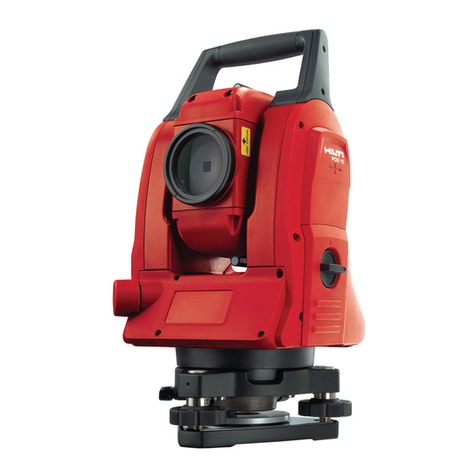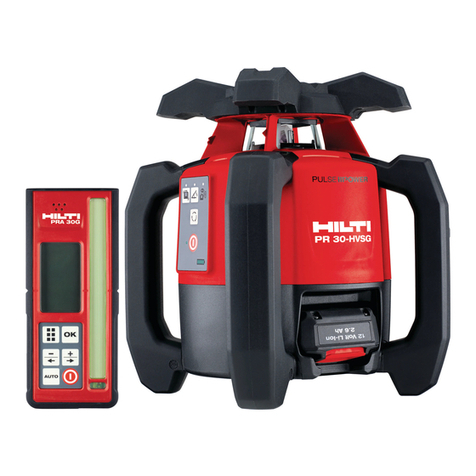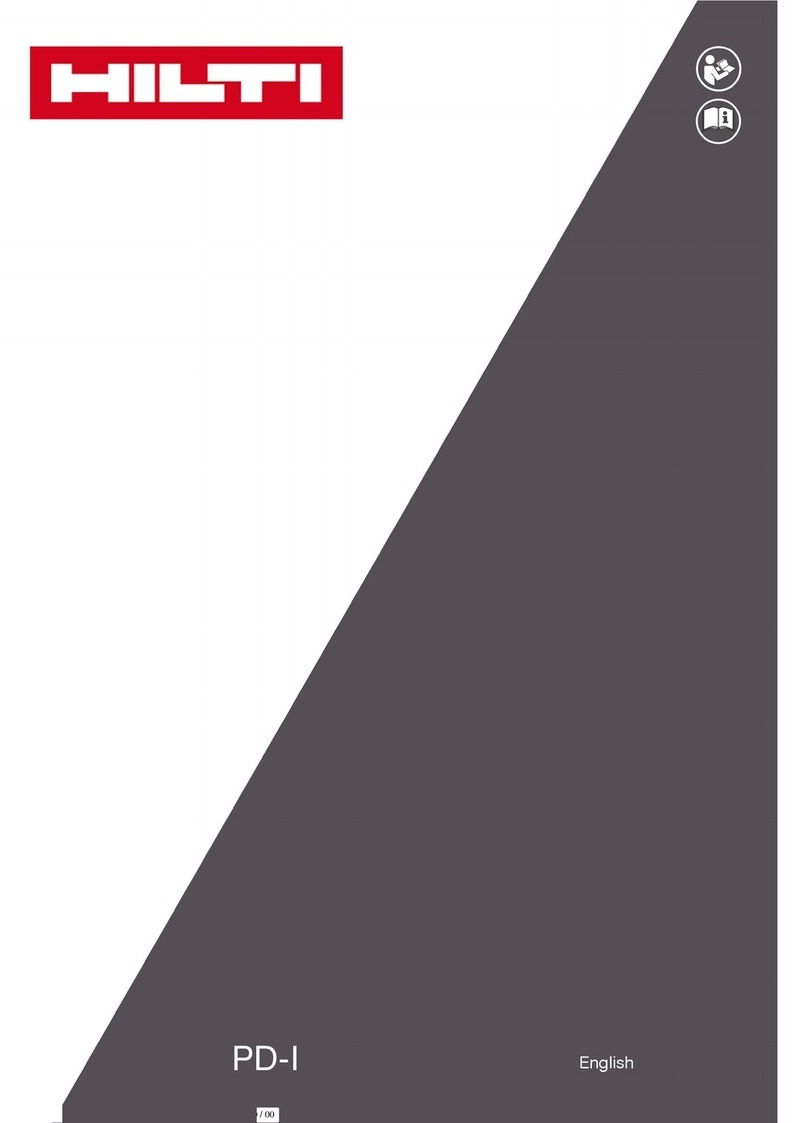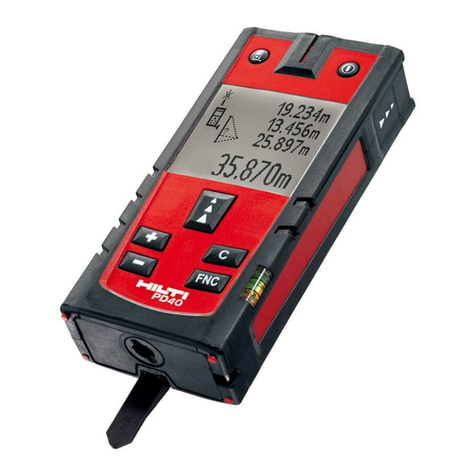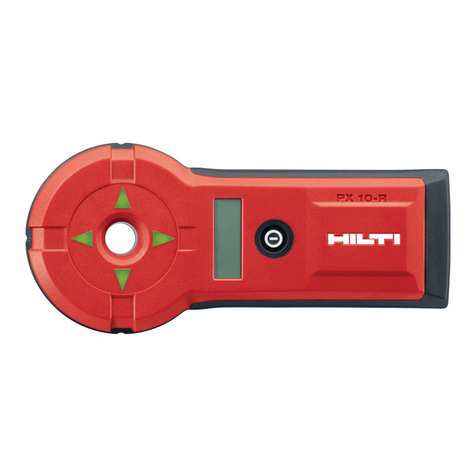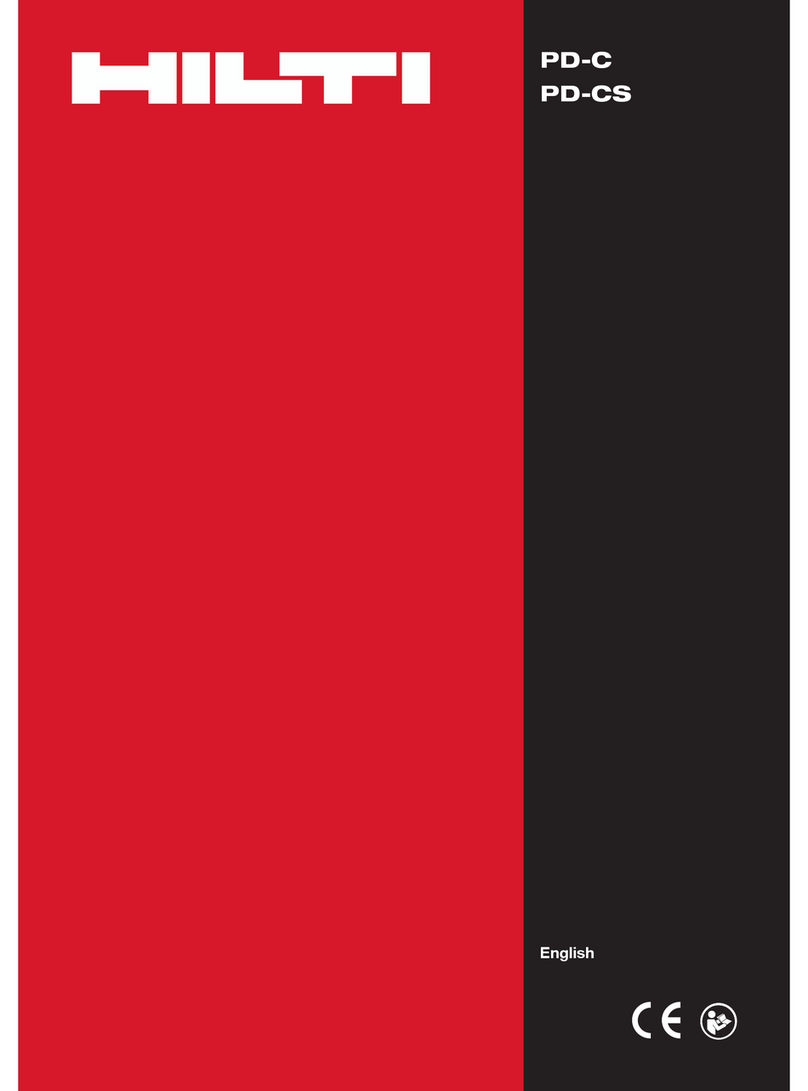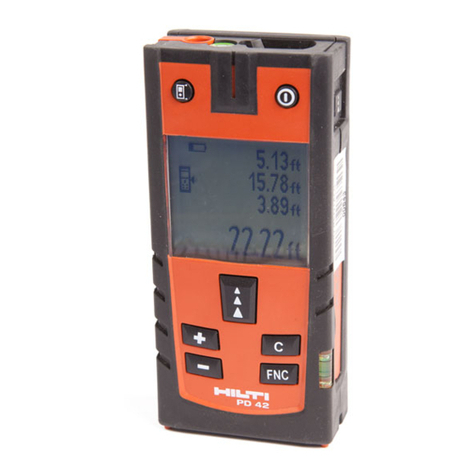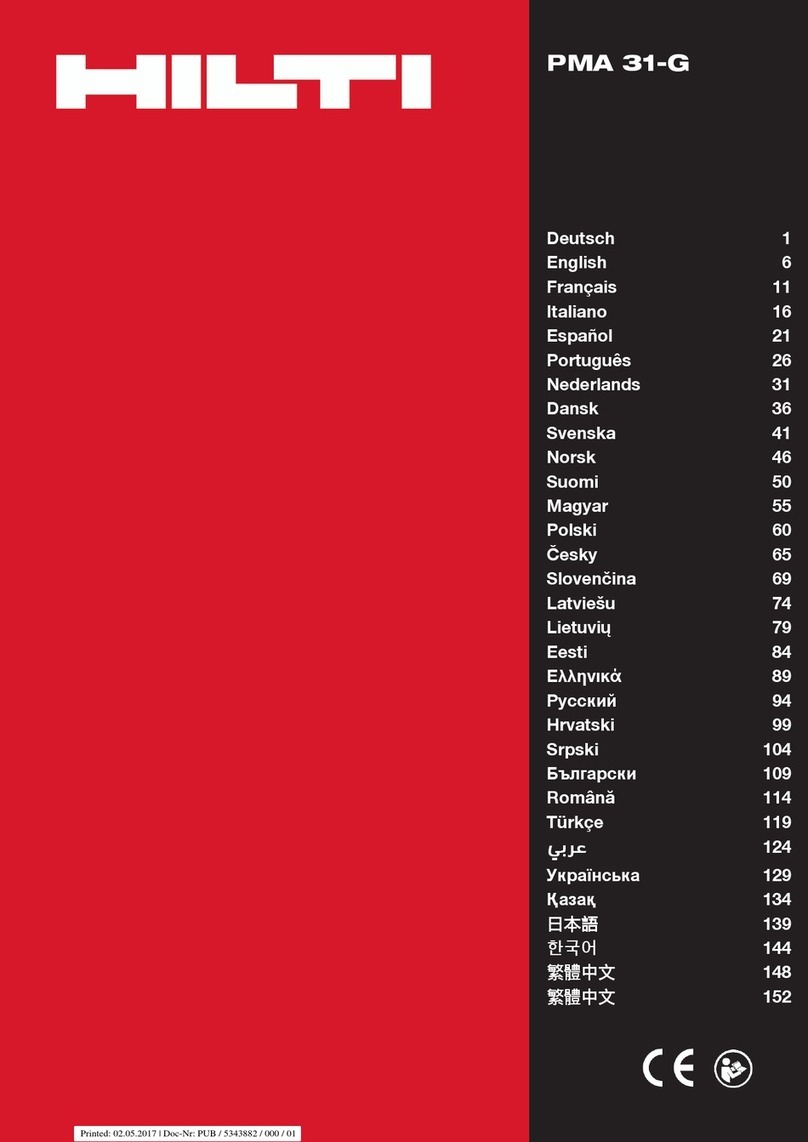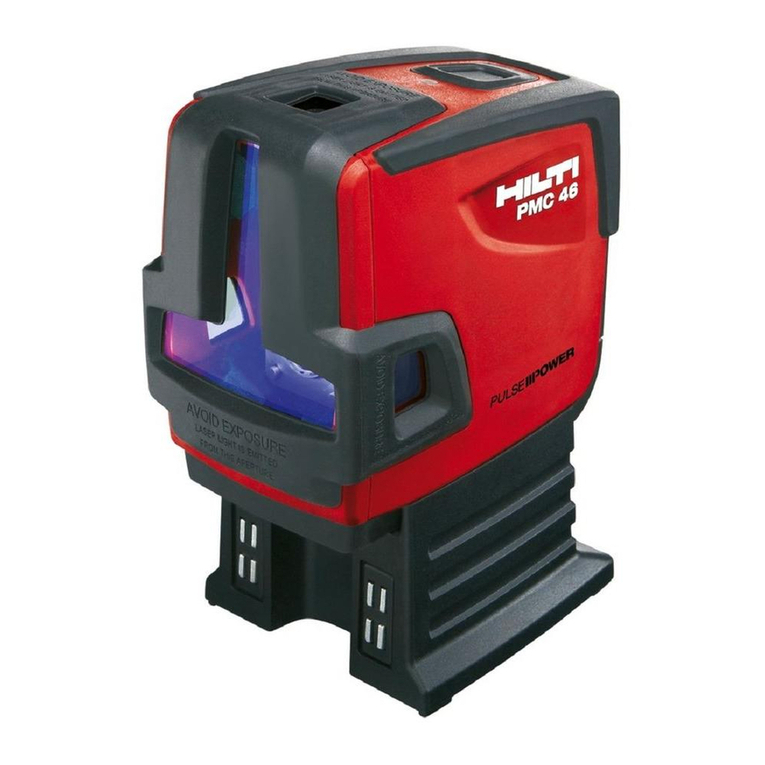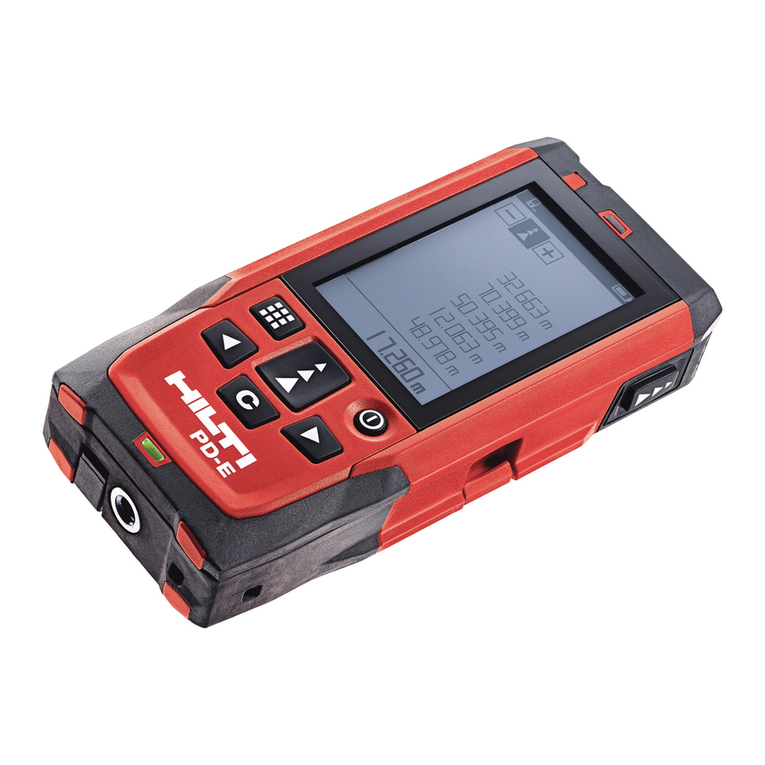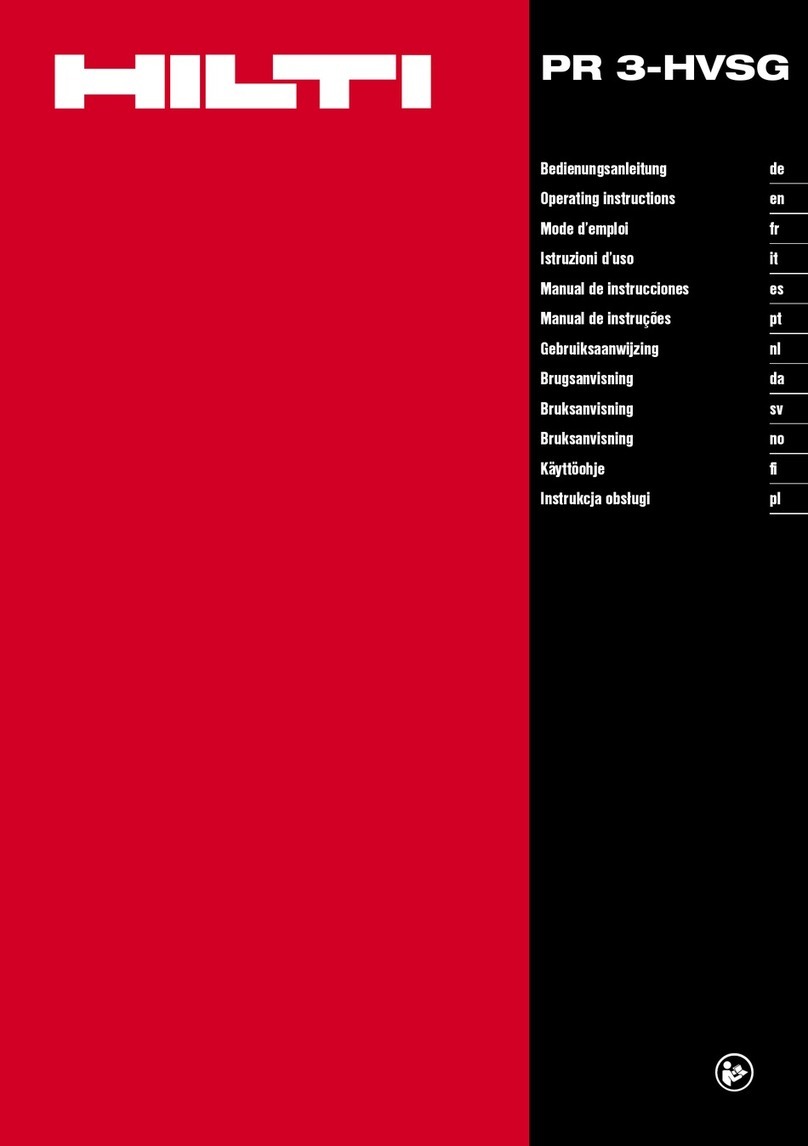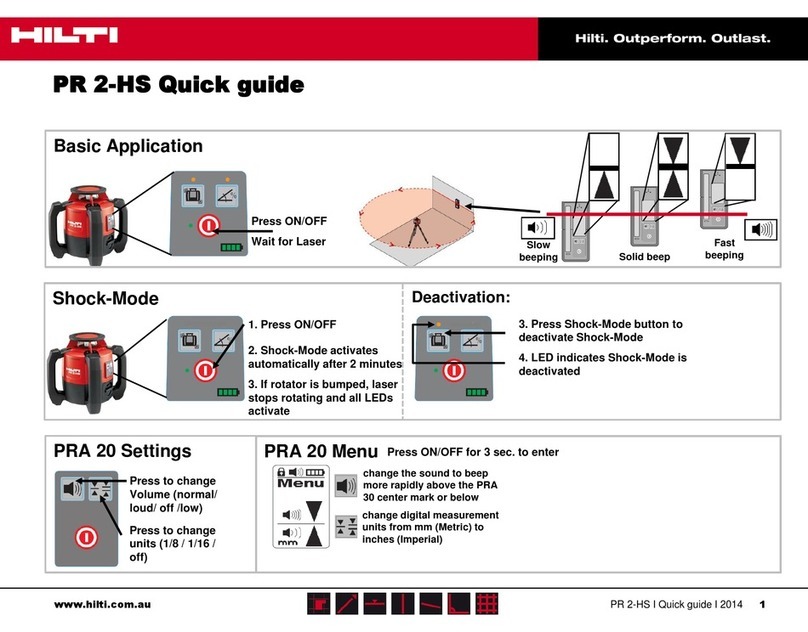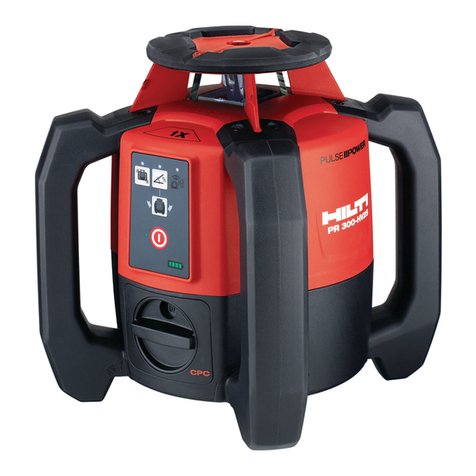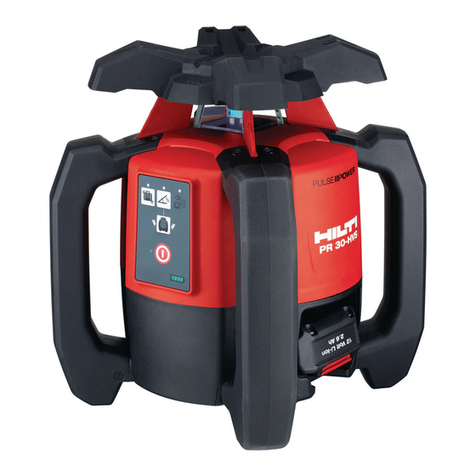
English 7
Incorrect settings may have damaging consequences. Incorrect settings, e.g. due to use of a
measuring extension of a different length, may lead to incorrect results and consequential damage.
▶Always pay attention to the information and warnings displayed on the touchscreen.
▶Make sure that you use the correct settings when taking measurements.
In addition to the safety rules listed in the individual sections of these operating instructions, the
following rules must be strictly observed at all times. The product and its ancillary equipment may
present hazards when used incorrectly by untrained personnel or when used not as directed.
▶Keep all safety instructions and information for future reference.
▶Stay alert, watch what you are doing and use common sense when working with the product. Do not
use the product while you are tired or under the influence of drugs, alcohol or medication. A moment of
inattention while operating the product may result in serious personal injury.
▶Do not render safety devices ineffective and do not remove information and warning notices.
▶If the product is opened improperly, laser radiation in excess of Class 2 may be emitted. Have the
product repaired only by Hilti Service.
▶Tampering with or modification of the product is not permitted.
▶Check that the product functions correctly each time before use.
▶Measurements taken from surfaces with low reflectivity in highly reflective surroundings may be
inaccurate.
▶Measurements taken through panes of glass or other objects may be inaccurate.
▶The measurement may be incorrect if the conditions under which the measurement is taken change
rapidly, e.g. due to people walking through the path of the laser beam.
▶Do not point the product toward the sun or other powerful light sources.
▶The product and its ancillary equipment may present hazards when used incorrectly by untrained
personnel or when used not as directed.
▶To avoid the risk of injury, use only genuine Hilti accessories and additional equipment.
▶Observe the information printed in the operating instructions concerning operation, care and maintenance.
▶Never use the product without having received the appropriate instruction on its use or without having
read this documentation.
▶Due to the principle employed, the results of measurements may be negatively affected by the surrounding
conditions. This includes, e.g. close proximity to equipment that generates powerful magnetic or
electromagnetic fields, taking measurements from unsuitable surfaces and use of unsuitable reflectors.
▶Measurements to plastic foam surfaces, e.g. polystyrene foam, to snow or to highly reflective surfaces,
etc. may result in incorrect readings.
2.2 Proper preparation of the working area
▶Avoid unfavorable body positions when working from ladders. Make sure you have a safe stance and
that you stay in balance at all times.
▶Secure the site at which you are taking measurements and take care to avoid directing the laser beam
toward other persons or toward yourself.
▶Use the product only within its specified limits. Do not direct the laser beam toward mirrors, stainless
steel, polished stone or similar surfaces.
▶Keep the laser exit window clean in order to avoid measurement errors.
▶Observe the accident prevention regulations applicable in your country.
2.3 Electromagnetic compatibility
Although the laser range meter complies with the strict requirements of the applicable directives, Hilti cannot
entirely rule out the possibility of interference to the laser range meter caused by powerful electromagnetic
radiation, possibly leading to incorrect operation. Accuracy must be checked by taking measurements by
other means when working under such conditions or if you are unsure. Likewise, Hilti cannot rule out the
possibility of interference with other devices (e.g. aircraft navigation equipment). The laser range meter
complies with the requirements of class A: The possibility of interference occurring in a domestic environment
cannot be excluded.
2.4 Working safely with laser tools
▶Laser Class 2 tools may be operated only by appropriately trained persons.
▶Laser beams should not be projected at eye height.
Printed: 10.11.2016 | Doc-Nr: PUB / 5270043 / 000 / 04
